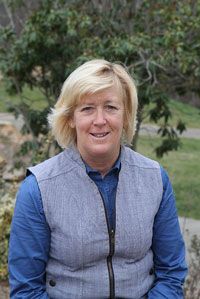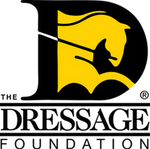Sarah Geikie: "What Judges Look for at Second and Third Level"

About Sarah Geikie: Sarah is a USDF Bronze and Silver Medalist, and successful competitor through Grand Prix. She is an FEI**** (C) Dressage Judge, USEF S Judge and a USDF Examiner and Faculty Member, who is also certified through Fourth Level. Sarah was the 2011 recipient of TDF's Major Anders Lindgren Scholarship for Dressage Instructors.
This is a follow up article to May's Op-Ed, "What Judges Look for at Training and First Level."
At every level, judges are looking for correct riding and horses that are being ridden and trained in the right way. In addition to this, judges want and expect to see that horses are shown at the appropriate level to their schooling. The rule of thumb is that you should show your horse one level down from the level you are training at home. The directives for each level are printed on all of the test sheets. Riders can and should refer to these often to make sure that your horse can easily perform the movements that are required. Judges do not want to see the horse and rider struggling with the movements within the test, therefore the rider should be sure that the horse is confirmed at the level they will be competing. A show is just that; the rider is presenting the horse in the best light, so that you can showcase the horse’s highlights, and minimize the weaker points, for very few horses excel at all of the movements, except maybe Valegro!
In Second Level is where collection enters into the horse's training. There are collected and medium paces in this level. Collection requires a much higher degree of impulsion and engagement than in First Level. Because of the increased degree of activity of the horse's hind legs, and the more supple, carrying back muscles, the overall balance of a Second Level horse is more uphill. The shoulders and withers are elevated, giving the horse a lighter, more compact appearance, one with more bounce in his trot and canter, or more air time.
Second Level also has the introduction of shoulder-in and travers. The lateral exercises develop strength, suppleness and collection in the horse. In addition, we have counter canter at this level which helps to improve the straightness and collection in the canter. There are also medium paces in Second Level. The mediums are developed out of the collected paces, so the result is that the mediums are ground covering, with suspension and air time as well as a clear uphill balance and connection. Riders need to show clear transitions into and out of the mediums as the transitions now get a separate score.
Judges are really looking for the correct development and understanding of collection. As I stated before, collection has more impulsion, thrust and engagement than the working paces. What we often see at Second Level is the idea of collection, requiring the horses to go slow (a misconception). With these horses, they lack any kind of impulsion or swing and their paces are usually slow, earthbound and on the forehand. Then, when the rider and horse attempt to ride the exercises at this level, they usually have many problems because the horse lacks the balance and engagement to do so. Developing collection requires that the rider can make a correct half-halt, one that engages a hind leg to bring it under the body towards the center of gravity. To make a correct half-halt, a rider needs to have a balanced independent seat. So, we go back again to the necessity of correct basics that must be established from the beginning.
Particular problems we see at this level pertain to the shoulder-in. When correctly ridden, it should be three tracks, with the horse bent uniformly through its whole body. The inner hind leg engages under the belly and center of gravity. What we often see are a “neck-in,” where the neck is over bent and the shoulders never leave the track. Another common misconception is when riders overdo the angle, so it then becomes a leg yield. A third variation from correct is to have the horse moving in a flat on the forehand balance, which defeats the whole purpose of the shoulder-in, which is to develop collection by mobilizing the shoulders and engaging the hind end.
The other lateral exercise, travers, is equally important to develop collection. This exercise should be ridden on four tracks, with the horse bent around the riders inside leg. There is often not enough angle and usually very little bend. In both of these exercises, the rider must remember to straighten the horse before the corner.
The next new movement in this level is counter canter. Judges want to see a straight horse, with no swinging hind quarters. Ideally, the counter canter should have the same quality and balance as the true canter, especially on the three loop serpentine.
Lastly at this level are the simple changes through walk. It pays at this level to really train your horse to be able to make easy simple changes, with no trot steps, which flows forward and uphill.
Second Level is certainly a level that is 'a work in progress.' Judges understand that. We want to see a relaxed harmonious pair where the training is going in the right direction.
Third Level is that level where the double bridle is introduced. Most of you are aware that there has been heated debate on whether to keep the double in this level or not. The judges who do not want it here have very good reason. They DO NOT want to see horses with gaping mouths, tongues out or short contracted necks with the horse behind the vertical. Unfortunately, this is often the case. The purpose of the double bridle use is to aid or help to enhance the collection. The double does not collect the horse. It allows the rider to ride with even more refined aids. Use of the double requires a rider with an educated seat and hand. When the double bridle is not used properly, such as when the rider uses the double to raise or lift the forehand, a false collection is created. False collection is where the head, neck and poll are too high, the back is then very hollow, and the hind legs go out behind the body. This is called absolute elevation, which is very wrong and very detrimental to the horse’s health and soundness. Judges become extremely upset when we see this.
Moving on from the double bridle, new movements at this level include half-pass, flying changes and extended paces. So, a Third Level horse shows collected, medium and extended paces. In order to develop both medium and extended paces, the quality of the collection must be higher than at Second Level. This means that even more impulsion, engagement, and throughness is necessary now. The extended paces are several notches above the medium paces. In extended trot and canter, the horse is covering the maximum amount of ground possible, and should show a lengthening not only of the strides, but also the frame.
This requires much more strength, engagement and balance than at Second Level. Common
problems we see here are insufficient collection in general, so that the mediums are flat and lacking balance and suspension, then there is often very little difference in the extended paces. The transitions in and out of the extensions now get a separate mark. Riders need to show these much more clearly. Usually they become very muddled, and at the end are often nonexistent. We want to see clear transitions in and out.
Half-pass is another new movement at Third Level. Similar to travers, half-pass involves bend in the direction of travel, with the hind and front legs crossing. We want to see bend! Most of the time, the half-passes look more like leg yields, lacking any kind of bend through the body. It seems that bending has gone out of vogue. In a half-pass, the horse should stay relatively parallel to the track, with the forelegs crossing before the hind legs. Additional problems I see with half-passes include haunches leading or trailing.
Lastly, we have flying changes in Third Level. The basic requirement is that the changes are clean! Over and above that, they should be balanced and uphill with the rider in control of the change. What we often see is that the canter before the change is not straight at all. The horse must be even in the contact and equally engaged on both hind legs. In addition to this, we often see riders that do not prepare the horse properly for the change. This involves being able to straighten the horse onto the new outside rein, and then half-halting the new outside hind leg to initiate the change.
To finish, I would like to add some basic show skills that all riders can polish to improve their score:
1. Centerlines and halts. All riders and horses can practice this to get at least an 8.
2. Corner riding. Ride a proper corner with half-halts before and after the corner and correct bend in the corner. The depth of the corner should be equivalent to the circles required at the level.
3. Ride from letter to letter.
4. Make proper sized figures.
5. Know what shoulder-in, travers and half-pass look like and feel like.
6. Master a correct half-halt, which is the cornerstone of collection.
7. Smile. Look like you are having fun, even if you are not!
8. Make it look easy.
The most important thing to remember is that the judge is evaluating you and your horse for 6 minutes only. We do not know what your journey has been, or what things you had to overcome in order to get down centerline. Only you know that, so you need to keep all of this in perspective and remember to enjoy the journey.
